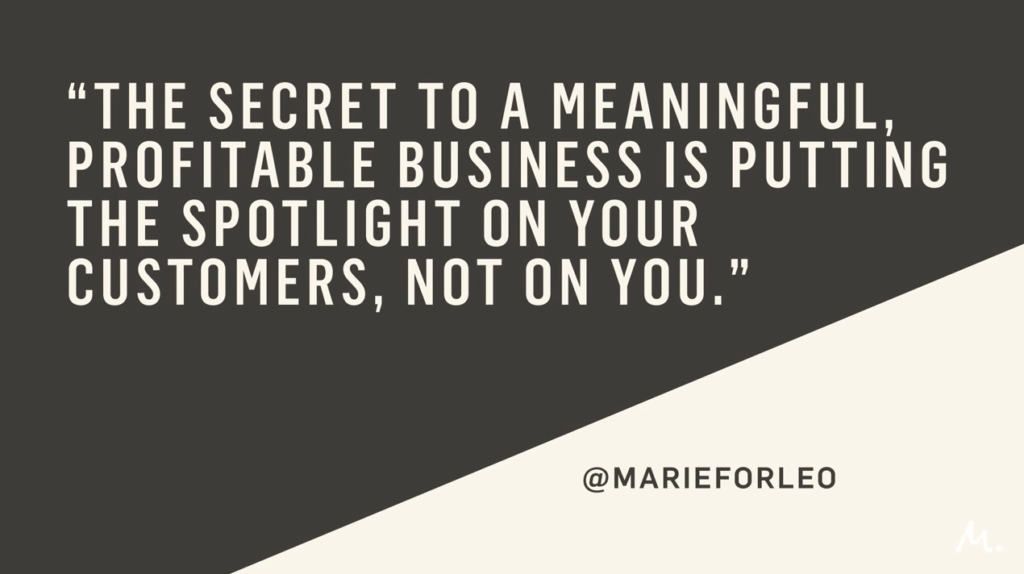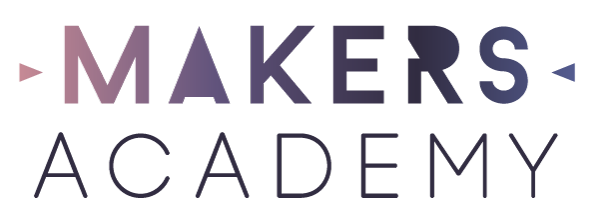This is the monthly training for June 2018, designed to help you create product descriptions and sales pages that convert (or SELL!)
I’m going to break the training into two categories: Copywriting and Sales Page Structure.
First, here’s the Makers TV Episode where I introduced the topic:
Copywriting Tips
Copywriting is all about bringing forth a conversation that’s happening in your potential customers head.
When you are writing your product descriptions, completely forget what you think “Product Description” means. Instead, write it as an Outcome Description. What does the outcome look like for your customer, once they buy your thing? How is you customer going to be different, after they buy your thing? How is having your thing (be it a product or service) going to make them feel, think or act? How is NOT having your thing, making then feel, think and act now? This is the before and after states that you want to try and get across in your product descriptions.
In order to be able to do this, you need to be able to get into the mind of your customer – you MUST know them VERY WELL.
Need some help with this? ➡︎ Complete the Customer Profile Workshop
And it’s best not to just guess at this information, but if you don’t yet have any customers, you might have to until you have more data (information about the people purchasing from you) to really figure out more about them.
If you DO already have customers however, the best way to get to know them better, is to ASK. Do a poll on your Facebook pages or groups, ask simple questions one at a time to get your audience to open up, or send out an email asking past customers to complete a quick survey – perhaps offering them a small discount on their next order as an incentive to complete the survey.
Talk about the benefits your thing will bring to your customer
For every sentence that describes a feature (eg this is a blue bag), ask: SO WHAT? This is a blue bag, so your outfit will always be on-point.
Tell a story
Always try to tell a story in your product description, that your customer can relate to and imagine themselves in.
Include specificity
It doesn’t matter if your story includes something like “Wishing you were still on holiday in Bora Bora and not stuck at home this chilly winter?” and your potential customer hasn’t been to Bora Bora – if their pain point is that they wish they were still on their holiday (wherever it may have been) and want to make their home feel more summery during the winter months, they will be able to relate to the story.
Always make sure your copy has the spotlight on your customer, not on you
Sometimes we fall into the trap of making our product descriptions all about our passion, our cleverness and or goals, when we really need to ensure we’re talking about their problem, their aspirations and their goals.

Be clear
Your language should always be simple, clear, and focused on the customer (eg Shop Now vs Our Range)
Clear and customer focused will beat clever and cute everyday of the week. – Marie Forleo
Above all, make your audience feel seen and heard and understood.
And lastly for copywriting, some food for thought:
Sales Page Structure
This is just ONE example of a sales page structure that you can use. In time you might want to create multiple sales pages and “split-test” them (compare the results of them, basically), but for now, the best thing for you to do is get something up where people can purchase your thing.
The basic structure is:
Headline – with one main promise (what is the benefit your customer will see once they purchase – how does your product help them?)
Video – Your sales page doesn’t HAVE to include a video, but a lot of people prefer watching over reading, so putting a video in that basically recaps what your sales page says with text and images will cover more bases.
Testimonial / Social Proof – Show people that others have bought and liked your thing, this builds trust
First Feature + Benefit – Paired with a really great image, be sure to focus on the benefits your customer will see, rather than the features of your thing
Second Feature + Benefit – remember to put the spotlight on your customer
Third Feature + Benefit – Telling a story that your customer can relate to is very powerful
Testimonials – more social proof
Buy now
FAQ section – be sure to address any possible objections here that your customer might have, to remove any barriers to them making a purchase
I’ve adapted a Divi Sales Page template for you that follows this structure, you can download it here.
Post any questions, comments, take-aways or your results of implementation in the comment section below.
Be sure to post any relevant resources you find to the forums so other members can benefit also – a rising tide lifts all boats!
